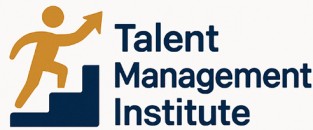
Understanding the Importance of Performance Goals
Recognizing the Critical Role of Performance Goals in the Workplace
Establishing effective performance goals is a cornerstone of talent management, playing a pivotal role in boosting employee performance and aligning individual efforts with broader organizational objectives. When thoughtfully crafted, goals provide team members with clear direction, enabling them to channel their skills towards achieving measurable outcomes. Performance goals are not just about employee development; they are fundamental to the organization's success as they help track progress and improve alignment with business strategies. By setting clear and focused goals, management can facilitate employee engagement and foster an environment where each team member feels valued and motivated, ultimately leading to increased customer satisfaction and organizational success. A well-defined goal setting process, as explored further, involves incorporating employee input to ensure relevance and attainability. This collaborative approach not only strengthens employee commitment but also enhances the quality of customer service by leveraging employees’ unique insights and experiences. Performance reviews that integrate these goals provide constructive feedback and highlight both achievements and areas for improvement. Regular check-ins can help employees stay on track and adapt to changing circumstances, ensuring that the goals remain aligned with dynamic work environments. Utilizing goal examples and SMART goals can provide clarity and measurability, allowing for more effective performance evaluations. In summary, understanding and leveraging performance goals is essential for creating a motivated team and maintaining a competitive edge in today's rapidly evolving market.Aligning Goals with Organizational Objectives
Aligning Individual Goals with Broader Organizational Objectives
In the realm of talent management, aligning individual performance goals with the broader objectives of the organization is crucial. This alignment ensures that every employee's efforts contribute to the overall success of the company. When setting performance goals, it's essential to consider how these goals fit into the larger picture of organizational development and customer satisfaction.
To achieve this alignment, management should first clearly communicate the organization's objectives to all team members. This communication helps employees understand the purpose behind their tasks and how their work impacts the company. By doing so, employees are more likely to feel engaged and motivated, knowing that their contributions are valued and meaningful.
Here are some strategies to align goals effectively:
- Involve Employees in Goal Setting: Encourage employees to participate in the goal-setting process. This involvement not only boosts employee engagement but also ensures that the goals are realistic and achievable. Employees who have a say in their goals are more committed to achieving them.
- Set Clear and Measurable Goals: Clearly defined goals help employees understand what is expected of them. Using SMART goals—Specific, Measurable, Achievable, Relevant, and Time-bound—can provide a structured approach to setting clear objectives.
- Regular Check-ins and Feedback: Regular check-ins and constructive feedback are vital to track progress and make necessary adjustments. These sessions provide an opportunity to discuss any challenges and recognize achievements, fostering a supportive workplace environment.
- Adapt to Changing Circumstances: The business landscape is ever-evolving, and goals may need to be adjusted to reflect these changes. Flexibility in goal setting allows the organization to remain agile and responsive to new opportunities or challenges.
By aligning individual goals with organizational objectives, companies can create a cohesive strategy that enhances employee performance and drives business success. This approach not only helps in setting effective performance goals but also contributes to a positive workplace culture where employees feel valued and motivated to improve their skills and experience.
Examples of SMART Goals for Performance Reviews
Creating Clear and Achievable Targets
Developing effective performance goals for employees involves defining clear and achievable targets. One popular method for setting these targets is the SMART criteria, which stands for Specific, Measurable, Achievable, Relevant, and Time-bound. By following this framework, organizations ensure that their goals are not only clear but also aligned with the broader organizational objectives.- Specific: Goals should be specific enough to provide clear direction. For example, rather than stating "Improve customer service," a more specific goal would be "Reduce customer complaint response time by 20% over the next quarter."
- Measurable: It is crucial that goals are measurable to track progress and performance effectively. This could involve using metrics such as sales figures, customer feedback scores, or production rates.
- Achievable: Goals must be realistic and attainable. Setting unattainable targets can lead to frustration and disengagement among team members.
- Relevant: Goals should align with the larger objectives of the organization, ensuring that employee efforts contribute to the business's success.
- Time-bound: Setting a deadline for each goal helps create a sense of urgency and allows for regular check-ins to monitor progress.
Incorporating Employee Input in Goal Setting
Engaging Employees in the Goal Setting Process
Involving employees in the goal setting process is a critical step in enhancing their performance and engagement. When employees have a say in setting their own performance goals, they are more likely to feel a sense of ownership and motivation towards achieving them. This collaborative approach not only helps in setting performance goals that are more aligned with employees' skills and aspirations, but also fosters a positive workplace culture. One effective way to incorporate employee input is through regular check-ins and discussions. These interactions between management and team members can help ensure that the goals set are realistic and contribute to overall team and organizational objectives. A two-way dialogue allows employees to express their career aspirations and identify the support they need from their organization to improve their skills and performance. Here are some tips to help employees in the goal-setting process:- Encourage Open Communication: Create an environment where employees feel comfortable sharing their thoughts and ideas about their roles, responsibilities, and aspirations.
- Understand Individual Strengths and Weaknesses: Recognize the unique skills and experiences each employee brings to the team. This knowledge will allow for setting effective and personalized performance goals.
- Promote Employee Development: Align performance goals with opportunities for professional growth and development. This might involve setting clear objectives that enhance customer satisfaction or improve customer service skills.
- Provide Constructive Feedback: Regular feedback sessions help employees track progress towards their goals. Providing constructive feedback can clarify expectations and address performance challenges before they escalate.
Monitoring Progress and Providing Feedback
Tracking Development and Offering Constructive Reviews
Monitoring progress is a fundamental aspect of achieving performance goals. By consistently tracking development, both the management and team members can understand where the success lies and where improvements are necessary. To ensure that goals are aligned with team and organizational objectives, consider adopting the following strategies:- Regular Check-Ins: Schedule routine check-ins to discuss the progress with employees. This not only keeps the team informed but also enhances employee engagement, as they feel valued and involved in their development.
- Establish Clear Milestones: Having clear milestones within the performance goals allows both the management and employees to have a structured path to follow. Milestones can act as indicators of progress towards the set objectives.
- Feedback Sessions: It's crucial to provide constructive feedback regularly. Feedback should aim at improving employee performance by highlighting strengths and addressing any areas needing improvement.
- Resource Provision: Ensure that employees have the necessary resources and skills to achieve their goals. This could involve access to training or relevant tools to facilitate their effectiveness in the workplace.













